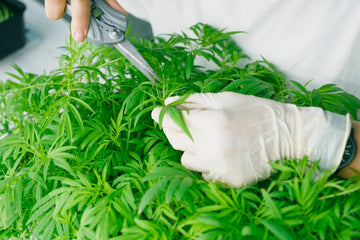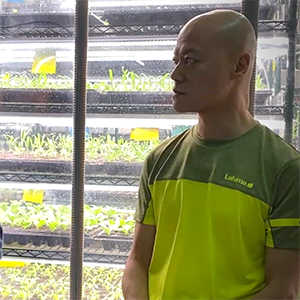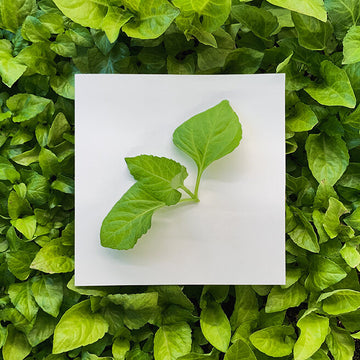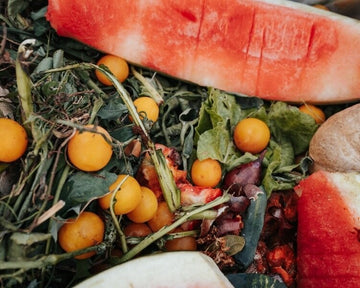

What's The Problem With Food Waste?
It's a common misconception that biodegradable waste isn’t a big problem compared to other waste, namely plastic, glass and paper (often called ‘dry’ waste), because it just dissolves into the soil. However, this is untrue.
Bio-degradation only happens in specific environments, when the temperature, humidity, presence of microorganisms and other conditions are ideal. Because of this, food waste and other biodegradable materials often end up in nature or landfills. Food waste is also the biggest category of waste produced by every single country, regardless of development level.
Over a third of all food produced globally goes to waste. This amount weighs 1.3 billion tonnes and is worth one trillion USD annually. However, arbitrary numbers can be confusing - how can we put this in context? All the world’s nearly one billion hungry people could be fed by less than a quarter of the food that is wasted just in the US and Europe. This is also a massive waste of other resources. 25% of the world’s fresh water supply is used to create food that is never eaten.

Food waste is one of HK’s biggest sources of waste.
How About Hong Kong?
Hong Kong exemplifies these issues further. Food waste accounts for 40% of Hong Kong’s total waste, which is over 3000 tonnes. Although this is often blamed on restaurants and supermarkets, two thirds of this waste comes from households.
There are many ways for individuals to help reduce their personal food waste. Some simpler examples are keeping leftovers to eat at a later date, shopping smart, and not purchasing excess food by planning in advance. However, even with all these methods, some food waste is inevitable, including inedible skins and seeds.
The best way to deal with this kind of food waste is composting. Compost is organic material that can be added to soil to help plants grow, mainly acting as a soil conditioner or fertiliser. There are many different options to compost at home. Some examples are burying the waste, piling it with soil and water, and to use a turning unit, among others. This is especially useful to use in a home garden to enrich the soil.
However, these methods have drawbacks. It can sometimes take up to 2 years for the material to compost fully using at home methods, and for most Hong Kongers with little to no outside space, these methods may be unrealistic. There are several organisations in Hong Kong that will take food waste to compost using industrial technology, such as O-PARK 1. This process can compost 200 tonnes of organic material per day, using anaerobic digestion and and composting technologies to turn food waste into compost and biogas, which is used to generate electricity. This is a much more efficient solution and requires no more effort than dropping off food waste at one of the bins from hkcomoposting.com located around Hong Kong Island, or for a business, even organising a pickup service.
In order to cut down on our own waste, at Common Farms we compost our used soil and harvested trimmings. This compost is then used on our outdoor experimental grows, or is sent to partners such as other farms, or schools with composting and gardening programs.
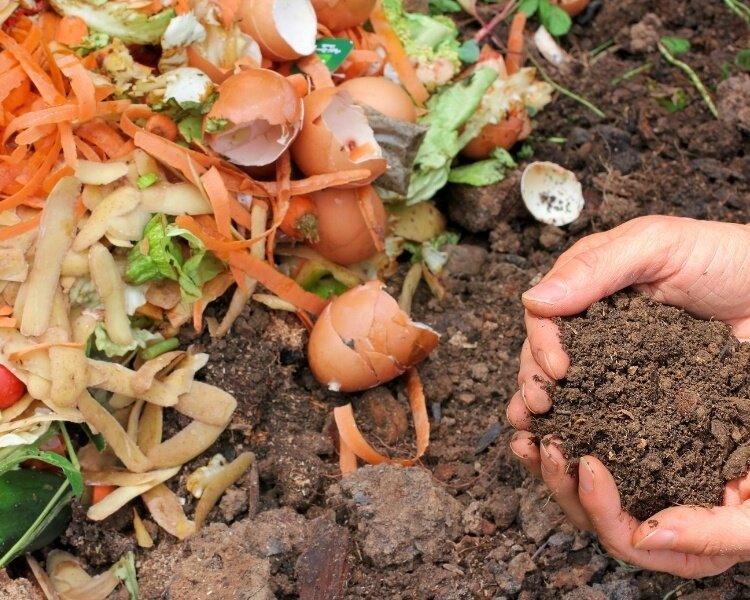
Turn food scraps into fertilizer.
How Can I Get Started?
- For more serious home gardens or businesses, hot composting and vermicomposting can be a faster alternative to piling. Hot composting requires a more precise balance of ingredients, including around 25 times more carbon (straw, shredded paper) than nitrogen (grass clippings, fruit and vegetable scraps), water, and heat, which will generate itself as a result of microbial activity within the pile. This will only take around 3 weeks, depending on temperature and other environmental factors, such as rain.
- Vermicomposting refers to the use of specific earthworms to speed up the process by eating the food scraps and producing nitrogen-rich castings. This method can be quite technical, but is another fast option that can work for both smaller and larger scales.
- Whatever method works best for you, any method taken to reduce food waste and the environmental impacts associated with it are essential to improve the health of the ecosystem, as well as provide for a rapidly growing population.
Composting Guides
Aerobic - Keep It Simple
- Aerobic composting is the most basic form of composting, consisting of just combining carbon and nitrogen-rich scraps with soil and the microorganisms in it. Turning it regularly adds oxygen to the pile which raises the temperature and helps breaks down the scraps. The two main types of compost materials are browns (carbon rich materials such as paper scraps and wood) and greens (nitrogen-rich materials such as vegetable and fruit scraps).
- Add kitchen scraps and organic matter to a bin. Aim for a ratio of around 2 parts brown to 1 part green.
- Keep the pile moist but not too wet - add water as needed.
- Turn the pile regularly.
- When the compost no longer emits heat, is dark, and crumbles, it is ready to use. This will take at least several months.
- Bokashi - Quick For Kitchen Scraps
- Bokashi composting will require a bokashi bucket. These are basically buckets with a drainage spout to drain off the liquid. You will also need bokashi bran, which is a form of fermented organic matter.
- Add any scraps to the bokashi bucket. These can include fruit, vegetables, meat and dairy.
- Add bokashi bran every time you add scraps and press the mixture down.
- Drain off the liquid every other day. This liquid can be diluted and used as a fertiliser.
- After two weeks fermenting, bury it in soil or add to a regular aerobic composting or worm bin to finish the process of fermentation.
- Another two weeks after this, the compost is ready to use. If it was buried in soil, it is easiest to just plant over it.
Vermicomposting - Make Garden Gold
- For vermicomposting, you will need worms - the most common type for composting are red wigglers. You will also need a bin to compost in. Although there are many multi-layered bins on the market, a regular plastic bin with a lid will also work. It is important for the compost bin to be in darkness and have adequate ventilation and drainage.
- Drill holes in the sides and the bottom of the container, several centimetres apart, for ventilation and drainage.
- You will need to raise the bin - some ways are to use a pallet or a simple wood box with gaps between the planks. Another method is to put the first bin into a slightly larger, but shorter second bin to act as a tray. This depends on whether the bin will be indoors or outdoors.
- Set up the bin with a layer of bedding. This can be leaves, straw, or shredded paper amongst other options.
- Add a scoop of garden soil. Pour in some water - an equal amount of water as soil usually creates the right moisture level.
- It is important to use the right amount of worms. One pound of worms will eat half their body weight in food waste every day, which is a good metric to go off of. Red wigglers can be found at bait shops or even online.
- Add the worms and food waste - stick to fruit and vegetable waste rather than meat or dairy.
- The easiest method to harvest from a smaller bin is to dump the contents of the bin onto a tarp under bright light. The worms will travel down and you can scoop the compost from the top of the pile.
- Add your finished worm castings to your garden and watch your plants thrive!

